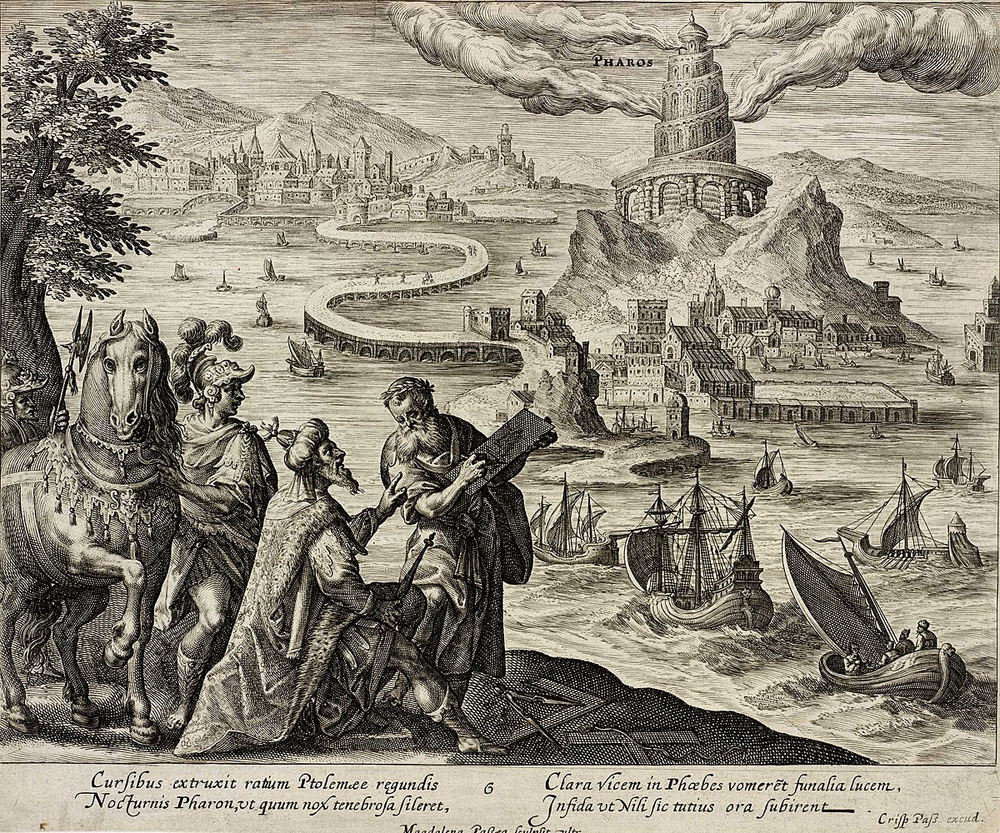In the annals of ancient history, one architectural wonder stood as a shining beacon, both literally and metaphorically—the Lighthouse of Alexandria. Rising majestically from the island of Pharos in ancient Alexandria, this remarkable structure was not just a navigational aid but a symbol of human ingenuity, cultural exchange, and the enduring legacy of antiquity. In this article, we embark on a journey to explore the captivating history, architectural marvels, and profound significance of the Lighthouse of Alexandria.
Page Contents
A Glimpse into the Past
The Lighthouse of Alexandria, also known as the Pharos of Alexandria, was one of the Seven Wonders of the Ancient World. Its construction was a testament to the wealth and sophistication of the Ptolemaic Kingdom, which ruled over Egypt during the 3rd century BCE. The lighthouse was erected on the island of Pharos, a strategic location at the entrance to the bustling port city of Alexandria.
Pharos Island
Pharos Island, after which the lighthouse was named, was connected to the mainland by a causeway. This island served as a critical point for maritime trade and navigation in the Mediterranean. Ships entering Alexandria’s harbor had to navigate treacherous waters, and the construction of the lighthouse aimed to mitigate the risks and guide sailors safely to their destination.
Read Also : Christ the Redeemer: Brazil’s Iconic Symbol of Faith and Culture
Architectural Marvels
The Lighthouse of Alexandria was not just a utilitarian structure; it was a marvel of ancient engineering and design.
Design and Construction
The lighthouse’s design is attributed to the Greek architect Sostratus of Cnidus, and its construction was overseen by the Ptolemaic dynasty. The lighthouse was constructed in several tiers, each with a distinct purpose and architectural style.
The Lower Square Tier: The base of the lighthouse was a square tier, built of massive limestone blocks. This tier served as the foundation and housed various chambers and facilities for the lighthouse keepers.
The Middle Octagonal Tier: Above the square base, an octagonal tier rose, narrowing as it ascended. This section was adorned with exquisite marble and featured columns and statues, adding an ornate touch to the lighthouse’s exterior.
The Upper Cylindrical Tier: The topmost section was cylindrical and housed the lantern room. It was crowned with a statue, often described as a colossal statue of Zeus or Poseidon, holding a fire basket that served as the lighthouse’s beacon. The bronze fire was fueled by a continuous supply of wood and other flammable materials.
The Light Source
The lighthouse’s most remarkable feature was its advanced lighting system. The fire in the lantern room emitted a powerful beam of light, visible from a considerable distance. To further enhance the light’s visibility, the lighthouse employed polished bronze reflectors, designed to concentrate and amplify the light’s intensity.
Cultural Significance
The Lighthouse of Alexandria held profound cultural and historical significance.
Symbol of Alexandria
The lighthouse became an enduring symbol of the city of Alexandria. Its radiant beacon was seen as a metaphor for the city’s role as a hub of knowledge, culture, and exchange. As a testament to this cultural richness, the city’s famed library, the Great Library of Alexandria, stood nearby.

Crossroads of Civilization
The lighthouse’s strategic location at the crossroads of the Mediterranean made it a meeting point for diverse cultures, languages, and ideas. Alexandria was home to scholars, philosophers, and artists from across the ancient world. The city’s vibrant intellectual life and its position as a center for learning and scholarship contributed to the lighthouse’s cultural significance.
Navigational Aid and Maritime Trade
The primary purpose of the Lighthouse of Alexandria was to aid navigation and ensure the safety of maritime trade. In antiquity, the Mediterranean was a bustling commercial hub, with ships traveling between Europe, Asia, and Africa. The lighthouse’s powerful beacon was a lifeline for sailors, guiding them safely through the often treacherous waters near Pharos Island.
Decline and Destruction
While the Lighthouse of Alexandria enjoyed centuries of glory, it eventually met its decline and demise.
Gradual Decay: Over time, the lighthouse suffered from natural wear and tear, including erosion from the sea and earthquakes. The powerful light and heat generated by the fire would have taken a toll on the structure’s materials.
Loss of the Beacon: The lighthouse’s beacon, a vital component of its functionality, eventually ceased to function. Historical accounts suggest that the light was extinguished due to an earthquake in the 14th century CE.
Subsequent Destruction: The decline of the lighthouse continued, and its remnants were used by various civilizations for construction materials. Eventually, the lighthouse disappeared from the historical record.
Read Also : Chichen Itza: The Enigmatic Heart of Ancient Maya Civilization
Legacy and Influence
Although the physical structure of the Lighthouse of Alexandria no longer graces the Mediterranean shore, its legacy endures.
Architectural Inspiration: The lighthouse’s architectural design and engineering principles have influenced subsequent generations of builders and architects. Its tiered structure, ornate decoration, and innovative use of materials have left an indelible mark on architectural history.
Cultural Reverberations: The lighthouse’s symbolism as a guiding light and a symbol of cultural exchange continues to resonate. It serves as a reminder of the interconnectedness of civilizations and the enduring human quest for knowledge, trade, and exploration.
Conclusion
The Lighthouse of Alexandria, with its luminous beacon and towering structure, was not merely a navigational aid; it was a symbol of human achievement, cultural exchange, and the enduring legacy of antiquity. While its physical presence has been lost to time, its memory continues to shine brightly, guiding us through the annals of history and inspiring us to explore the boundaries of human ingenuity and cultural exchange. The Lighthouse of Alexandria stands as a testament to the power of knowledge, the importance of navigation, and the enduring legacy of the ancient world’s wonders.


